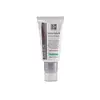What's inside
What's inside
 Key Ingredients
Key Ingredients

 Benefits
Benefits

 Concerns
Concerns

 Ingredients Side-by-side
Ingredients Side-by-side

Water
Skin ConditioningAzelaic Acid
BufferingPropylene Glycol
HumectantPropanediol
SolventAlpha-Arbutin
AntioxidantDimethyl Sulfone
SolventStrontium Chloride Hexahydrate
Skin ConditioningIsononyl Isononanoate
EmollientGlycerin
HumectantCyclopentasiloxane
EmollientDimethyl Isosorbide
SolventGlyceryl Stearate
EmollientPEG-100 Stearate
Cetyl Palmitate
EmollientSodium Hydroxide
BufferingPropolis Extract
Skin ConditioningPhenoxyethanol
PreservativeXylitol
HumectantDimethicone
EmollientAnhydroxylitol
HumectantArachidyl Alcohol
EmollientCetyl Alcohol
EmollientBehenyl Alcohol
EmollientCitrus Medica Peel Oil
Parfum
MaskingXylitylglucoside
HumectantArachidyl Glucoside
EmulsifyingCaprylyl Glycol
EmollientSodium Phytate
Glucose
HumectantCitric Acid
BufferingPotassium Sorbate
PreservativeSodium Benzoate
MaskingAlcohol
AntimicrobialWater, Azelaic Acid, Propylene Glycol, Propanediol, Alpha-Arbutin, Dimethyl Sulfone, Strontium Chloride Hexahydrate, Isononyl Isononanoate, Glycerin, Cyclopentasiloxane, Dimethyl Isosorbide, Glyceryl Stearate, PEG-100 Stearate, Cetyl Palmitate, Sodium Hydroxide, Propolis Extract, Phenoxyethanol, Xylitol, Dimethicone, Anhydroxylitol, Arachidyl Alcohol, Cetyl Alcohol, Behenyl Alcohol, Citrus Medica Peel Oil, Parfum, Xylitylglucoside, Arachidyl Glucoside, Caprylyl Glycol, Sodium Phytate, Glucose, Citric Acid, Potassium Sorbate, Sodium Benzoate, Alcohol
 Reviews
Reviews

Alternatives
Ingredients Explained
These ingredients are found in both products.
Ingredients higher up in an ingredient list are typically present in a larger amount.
Azelaic acid is a multitasker ingredient that helps treat acne, pigmentation, and irritation. It is a great option for sensitive skin.
What makes azelaic special?
The best thing about azelaic acid is it's gentleness. It's generally well-tolerated and safe to use alongside other actives like niacinamide or salicylic acid.
Unlike AHAs, azelaic acid will not make you photosensitive/sun sensitive.
You can find this ingredient naturally occurring in grains like wheat, rye, and barley. In cosmetics, azelaic acid is typically lab-made, which is more stable and effective.
Learn more about Azelaic AcidPropylene Glycol is an odorless, colorless liquid. As a humectant, it helps skin retain moisture. It also aids in delivering active ingredients.
Another role of this ingredient is preventing a product from melting or freezing. Propylene glycol also adds antimicrobrial properties to a product, elongating product lifespan.
This ingredient is considered an organic alcohol and commonly added into both cosmetics and foods.
Those with sensitive skin or conditions may develop a rash when using this ingredient.
Learn more about Propylene GlycolSodium Hydroxide is also known as lye or caustic soda. It is used to adjust the pH of products; many ingredients require a specific pH to be effective.
In small amounts, sodium hydroxide is considered safe to use. However, large amounts may cause chemical burns due to its high alkaline.
Your skin has a natural pH and acid mantle. This acid mantle helps prevent harmful bacteria from breaking through. The acid mantle also helps keep your skin hydrated.
"Alkaline" refers to a high pH level. A low pH level would be considered acidic.
Learn more about Sodium HydroxideWater. It's the most common cosmetic ingredient of all. You'll usually see it at the top of ingredient lists, meaning that it makes up the largest part of the product.
So why is it so popular? Water most often acts as a solvent - this means that it helps dissolve other ingredients into the formulation.
You'll also recognize water as that liquid we all need to stay alive. If you see this, drink a glass of water. Stay hydrated!
Learn more about Water